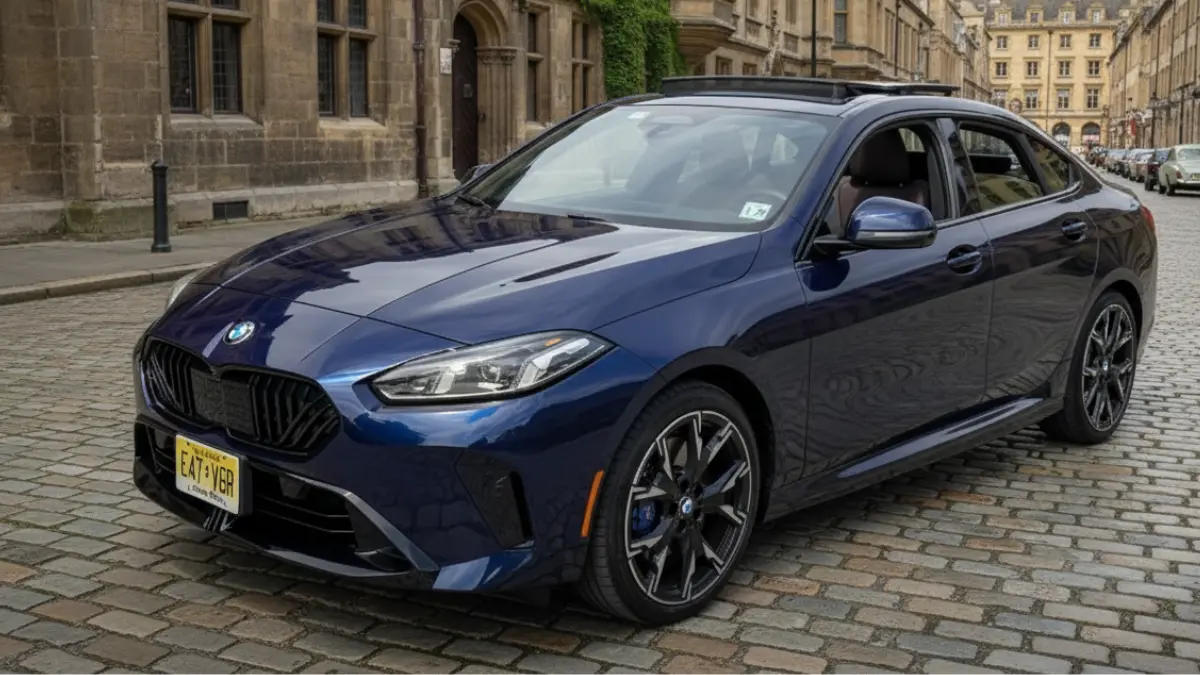BMW 228 2025 Gran Coupe: 241 HP Turbo, 7-Speed DCT, Sleeker Design, iDrive 9 Tech Upgrade

The all-new 2025 BMW 228 2025 Gran Coupe (branded by BMW simply as the 228 in current markets) tightens the package introduced in 2019 with more power, updated styling, and BMW's latest iDrive 9 interface. The base 2.0-liter turbocharged four-cylinder now produces 241 hp and 295 lb-ft of torque, routed through a new 7-speed dual-clutch transmission and optionally to BMW's xDrive all-wheel-drive system. Pricing starts at $39,600 for a front-wheel-drive version; the all-wheel-drive model adds $2,000. A well-optioned test car landed just over $50,800.
sharper performance and fresher tech in a compact package
BMW's second-generation 2 Series Gran Coupe aims to plug the gap left by a larger, heavier 3 Series for buyers seeking an entry-level compact luxury sports sedan. For 2025, BMW revised exterior proportions, increased output from the base engine, and equipped the cabin with iDrive 9. The most newsworthy changes are the powertrain upgrade to 241 hp / 295 lb-ft, the move to a 7-speed dual-clutch gearbox (replacing the previous 8-speed torque-converter auto), and the availability of a lower-cost front-wheel-drive model for 2026.
2025 BMW 228 2025 Gran Coupe Powertrain and performance
Engine & transmission
- Base engine: transverse-mounted 2.0L gasoline direct-injection turbocharged four-cylinder, 241 hp and 295 lb-ft (up from prior figures).
- Transmission: new 7-speed dual-clutch (DCT). The previous 8-speed torque-converter automatic is discontinued.
- AWD: xDrive available for an additional $2,000; a front-drive version is introduced for 2026 at a lower starting price.
Acceleration & economy
- Manufacturer 0–60 claim: 5.8 seconds; real-world test runs produced 5.15–5.34 seconds on mixed surfaces.
- EPA-type economy quoted in testing: ~26 mpg city / 38 mpg highway / ~30 mpg combined (premium fuel).
- Fuel tank: 13 gallons, delivering roughly ~400–450 miles of real-world range depending on driving mix.
Notes: The DCT produces brisk launches and quick shifts in sport modes but can feel firm at first gear engagement. A short sport "overboost" feature grants a temporary power increase for about 10 seconds when using the paddleshift marked "boost."
Exterior: cleaner lines, still a divisive silhouette
BMW revised the Gran Coupe's exterior to read closer to the 4 Series family, lower-looking hood, wider kidney grille treatment, and sleeker lighting signatures. Improvements include:
- New LED headlight and sequential turn-signal signature.
- Larger, wider twin-kidney grille with optional illuminated surround and active shutters.
- M Sport / Shadowline trims add blacked-out accents; 19-inch optional wheels on the test car.
- Dimensions remain similar to the previous generation: wheelbase ~105.1 in, length ~179.2 in, width ~70.9 in.
- Curb weight: just over 3,500 lb (M235 is only ~50 lb heavier).
While the front view is improved, critics may still find the side and rear profiles tall and narrow for a performance sedan; BMW slightly increased overall height versus the previous model, a choice some feel undermines the "sport sedan" silhouette.
Interior and technology
Cabin packaging
- Redesigned interior with iDrive 9 infotainment software.
- Center display: 10.7-inch; instrument cluster: 10.25-inch (smaller than BMW's larger 14.5-inch displays found in some models).
- Standard 12-speaker Harman Kardon audio.
- Synthetic "Veganza" upholstery only (no real leather option on the Gran Coupe); 8-way power seats with thigh extension and two-position memory, heated front seats and heated steering wheel.
- Notable omissions: no ventilated (cooled) seats, no lumbar adjustment on the tested configuration, and rear seat headroom is compromised by the sloping roofline.
Convenience & driver aids
- Wireless Apple CarPlay / Android Auto.
- Optional head-up display, 360-degree camera (parking assistance package), and Driver Assistance Professional package (adaptive cruise, lane-keeping, traffic jam assist).
- Ambient lighting with multiple themes and selectable drive modes (Sport, Personal, Efficient, Expressive, etc.).
Practicality and ergonomics
- Trunk: conventional sedan layout with ~15.2 cu ft of usable cargo space and 40/20/40 folding rear seats plus useful underfloor storage.
- Rear legroom: roughly 34.4 in; headroom and ease of ingress/egress are restricted due to the coupe-like roofline, typical tradeoffs for "Gran Coupe" styling.
- Interior materials and build quality are solid for the segment, though some door-thunk and cheaper lower trim plastics slightly detract from perceived luxury.
Driving impressions
In everyday driving the 228 Grand Coupe delivers a planted, neutral chassis feel. The adaptive dampers are standard and BMW has tuned ride quality to be more refined than before while retaining agility. Steering is quick but light, prioritizing responsiveness over tactile feedback. The xDrive configuration tested adds traction and composure; the front-drive variant (for 2026) will be the lighter, lower-cost option but is less desirable to enthusiasts.
2025 BMW 228 2025 Gran Coupe Pricing and competition
- Starting price (front-drive, 2026): $39,600
- xDrive AWD: +$2,000 → $41,600 base.
- Test vehicle (premium options, paint, M Sport Pro, destination): $50,825.
- M235 performance variant tested previously is roughly $60,000, narrowing the gap with the 3 Series and raising questions about value thresholds.
Segment rivals: Mercedes-Benz CLA, Audi A3, Acura Integra. The 228's strengths are stronger base engine output versus rivals (e.g., more power than the CLA250, A3, and Acura Integra in base tune) and engaging driving dynamics; the Acura Integra, however, offers more interior space and lower price.
Verdict
The 2025 BMW 228 2025 Gran Coupe (marketed by BMW as the 228) represents a meaningful evolution of BMW's compact four-door, delivering notable power gains, sharper tech, and improved ride quality. It remains a polarizing design, still taller and narrower than some buyers would like, but it offers one of the quickest base-engine experiences in the segment and a strong value proposition for buyers who prioritize driving dynamics and BMW's brand experience.
Who it's for: shoppers who want a compact BMW with strong on-road performance, contemporary tech (iDrive 9), and the option of AWD at a competitive price.
Who should look elsewhere: buyers who need maximum rear-seat space or who prioritize ultra-luxury finishes (or ventilated seats) at this price point, the Acura Integra and some Audi/Mercedes alternatives may better serve those needs.